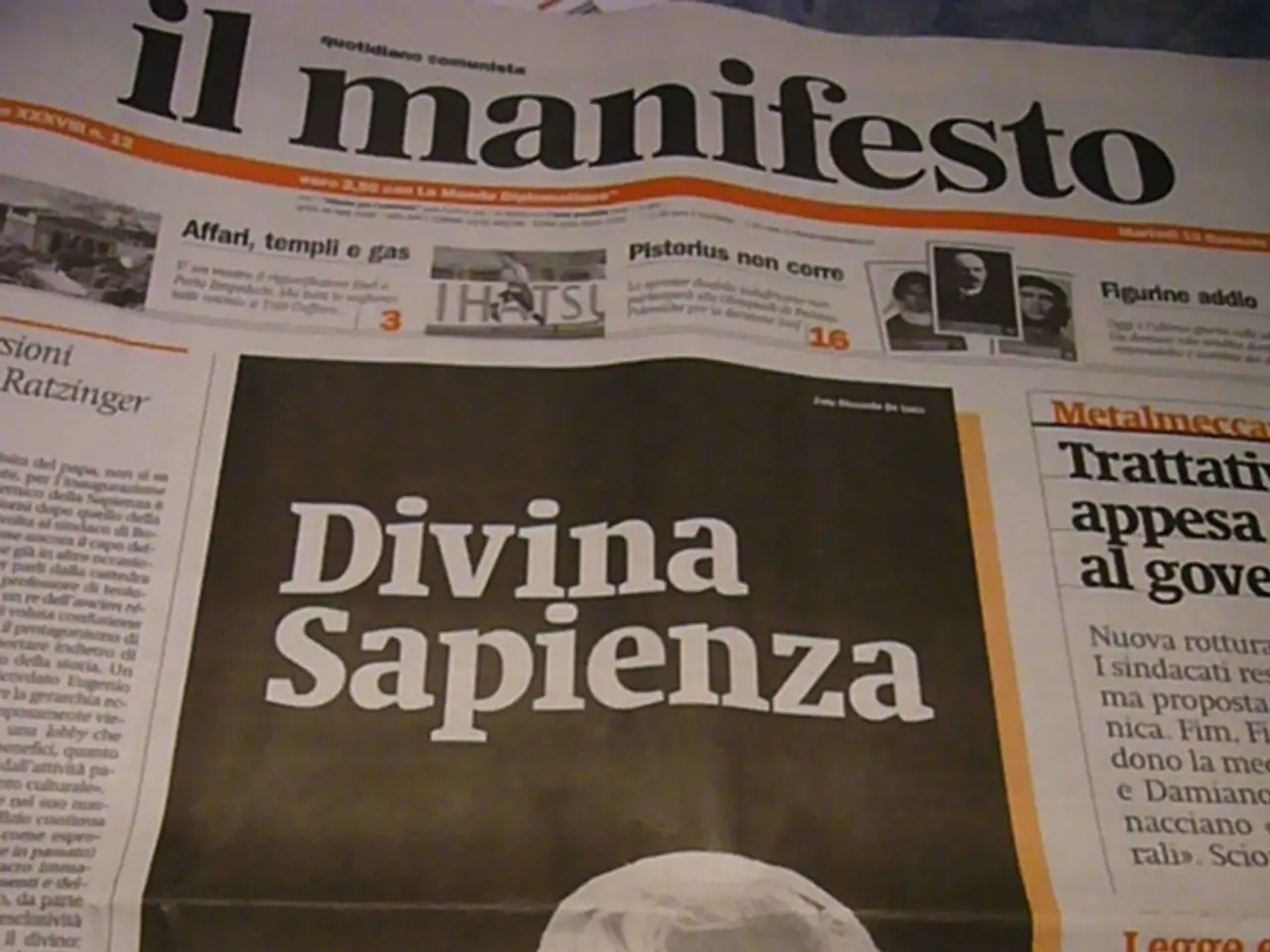Culture Segment of the New York Times ventures into video content
The New York Times has recently undergone a significant change in its culture section, with four long-standing critics - Jesse Green, Margaret Lyons, Jon Pareles, and Zach Woolfe - being reassigned as part of a broader shakeup aimed at evolving the paper's coverage of arts and entertainment.
The reorganisation reflects a shift towards new story forms, including essays, videos, and experimentation beyond traditional reviews. This move is in response to cultural shifts and fragmentation caused by technology and smartphones, as the Times seeks to adapt to changing reader habits and platforms.
The decision has sparked unease and calls for greater clarity from the culture desk staff. Nearly 50 unionized culture staffers sent a letter to leadership expressing confusion and worry about the abrupt reassignments of these four valued and authoritative voices. They called for a meeting to discuss the changes.
During a tense hour-long meeting with top editors, including Executive Editor Joe Kahn and culture editor Sia Michel, staff questioned why the move happened and how short-form video and other new mediums might be integrated into future coverage.
The Times is currently searching for new critics for these roles while reassigning the four critics to other positions within the paper. However, employees have expressed concern about the lack of details provided about the new story forms the masthead is seeking or how it sees criticism changing.
Despite the controversy, Kahn has continued to push back against a newsroom that hasn't been afraid to voice its displeasure at controversial moves by management. Kahn's suggestion that critics should be reshuffled in a similar manner to regular beat reporters seemed to overlook the specialization of those jobs.
The Times' leadership believes that criticism looks very different in a media environment where some of the most influential critics and tastemakers shape the public's opinions via video, podcasting, and social media. The paper's critics have held their roles for years, deepening their authority in their zones of expertise, but the Times is clearly in the midst of rethinking its critical voice, with a focus on video-driven criticism and short-form video reviews for social media.
As the Times moves forward with these changes, it remains to be seen how the new approach will impact the paper's critical authority and the way it covers arts and entertainment.
[1] The New York Times (2023). Times Reassigns Four Longtime Critics as Part of Cultural Shakeup. Retrieved from https://www.nytimes.com/2023/05/01/arts/television/nytimes-critics-reassignment.html [2] The New York Times (2023). The New York Times Holds Meeting with Staff to Explain Culture Section Changes. Retrieved from https://www.nytimes.com/2023/05/03/business/media/nytimes-culture-section-changes.html [3] The New York Times (2023). Culture Staff at The New York Times Express Confusion and Worry over Critic Reassignments. Retrieved from https://www.nytimes.com/2023/05/04/arts/television/nytimes-culture-staff-letter.html [4] The New York Times (2023). The New York Times Experiments with Video-Driven Criticism and Short-Form Reviews for Social Media. Retrieved from https://www.nytimes.com/2023/05/05/business/media/nytimes-video-criticism.html
- In a media environment dominated by technology and smartphones, The New York Times is experimenting with new story forms, such as essays, videos, and short-form reviews for social media, as a means to adapt to changing reader habits and platforms.
- The shift towards new mediums, including video-driven criticism and short-form video reviews, has raised concerns among culture desk staff, who have expressed the need for greater clarity about the changes and the evolving role of criticism within the paper.




